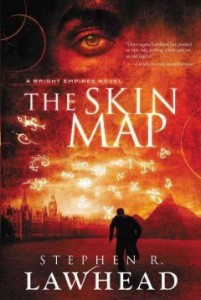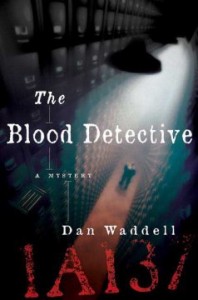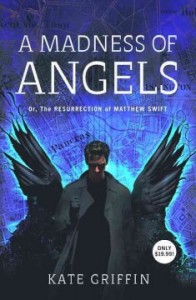I report to you today, Beloved Patrons, from London, a city with perhaps more literary connections than any other in the world–or, at the very least, the English speaking world. I think it might be an interesting challenge to attempt to walk down a street in this great city, and not find some literary reference. Watson provided a map of the city for readers to follow in his reports of Sherlock Holmes’ adventures; the opening of Dickens’ Bleak House perfectly captures not only the chaos of the bustling street, but the dismally wet autumnal weather around Lincoln’s Field Inn; Virginia Woolf’s Mrs. Dalloway is set so consciously in Westminster that her heroine and setting seem inseparable; even James Bond walked these stories streets, perhaps along with his less ostentatious colleague, Smiley, from John Le Carre’s immortal spy novels. This is a city made up of words and tales, of shadows and mysteries that beg to be unravelled.
What I find truly interesting is how many different Londons there are in literature. Some authors, like Zadie Smith or Monica Ali, focus on the real and the tangible, pulling their stories from the world directly outside their windows. Historical mysteries delight in the fog-shrouded streets and dark alleys of the Victorian city, not in the least because of the legend of Jack the Ripper–which seems to have survived, despite the intercession of modern science. Personally, my favorite versions of London are the fantastic ones seen by Neil Gaiman or Susannah Clarke, where magic and reality blend and mix. If there is anywhere I could believe in separate world below ground, or magicians who could alter reality, it would be in London.
So for the next few weeks, I’ll try to post some blog-ish postcards from this storied city–beginning as soon as the jet-lag fully wears off. For now, however, take a look at some stories set in this storied city, and get your imagination spinning….
 The Skin Map: The first scenes of Stephen Lawhead’s incredibly imaginative time-travel/epic fantasy mashup series known as the Bright Empires begins in contemporary London, and the utter banality of his protagonist’s existence provides the perfect foil to the adventures that he is soon to begin. As he rushes to catch a train, Kit Livingston finds himself dragged into an adventure that not only changes his life, but may very well change history. Because Britain’s ‘ley lines’ are not merely fictional…they exist beneath the streets and in the shadows, and offer those with knowledge of thier power to travel at will. Kit’s great-grad-father nearly died to keep the knowledge of the ley lines a secret–will Kit be able to measure up to his expectations.
The Skin Map: The first scenes of Stephen Lawhead’s incredibly imaginative time-travel/epic fantasy mashup series known as the Bright Empires begins in contemporary London, and the utter banality of his protagonist’s existence provides the perfect foil to the adventures that he is soon to begin. As he rushes to catch a train, Kit Livingston finds himself dragged into an adventure that not only changes his life, but may very well change history. Because Britain’s ‘ley lines’ are not merely fictional…they exist beneath the streets and in the shadows, and offer those with knowledge of thier power to travel at will. Kit’s great-grad-father nearly died to keep the knowledge of the ley lines a secret–will Kit be able to measure up to his expectations.
 The Blood Detective: Dan Waddell published the official guidebook to accompany the hit series Who Do You Are, so it makes sense that the hero of his two-book series is a genealogist, hired by Scotland Yard to help piece together a grisly murder investigation from the National Archives in Kew. As the killer continues taunting the police with cryptic messages, Nigel Barnes realizes that this crime has ties to a Victorian serial killer whose legacy is still very much alive. Barnes continues his work Blood Atonement, which provides some great character development for him and his team, including a look into his adorably quirky London flat, furnished with the most unlikely of antique curios.
The Blood Detective: Dan Waddell published the official guidebook to accompany the hit series Who Do You Are, so it makes sense that the hero of his two-book series is a genealogist, hired by Scotland Yard to help piece together a grisly murder investigation from the National Archives in Kew. As the killer continues taunting the police with cryptic messages, Nigel Barnes realizes that this crime has ties to a Victorian serial killer whose legacy is still very much alive. Barnes continues his work Blood Atonement, which provides some great character development for him and his team, including a look into his adorably quirky London flat, furnished with the most unlikely of antique curios.
 A Madness of Angels: Kate Griffin’s paranormal adventure begins where most cop procedurals end–with the bad guy being brought down. But in this case, Griffin’s hero, Matthew Swift, returns to London–and to his body–two years after his death. This is a terrific, and often challenging book, not in the least because Griffen uses the their-person plural for her narrator’s vision (her most commonly used pronoun is ‘we’, not ‘I’) that emphasizes her hero’s bizarre predicament inside his own skin. Though a little jarring at first, this style is wonderfully appropriate to this tale, and adds another level of weirdly bizarre to this tale of London and the shadows that cling to it.
A Madness of Angels: Kate Griffin’s paranormal adventure begins where most cop procedurals end–with the bad guy being brought down. But in this case, Griffin’s hero, Matthew Swift, returns to London–and to his body–two years after his death. This is a terrific, and often challenging book, not in the least because Griffen uses the their-person plural for her narrator’s vision (her most commonly used pronoun is ‘we’, not ‘I’) that emphasizes her hero’s bizarre predicament inside his own skin. Though a little jarring at first, this style is wonderfully appropriate to this tale, and adds another level of weirdly bizarre to this tale of London and the shadows that cling to it.
